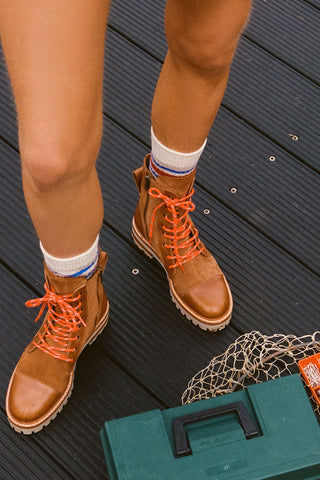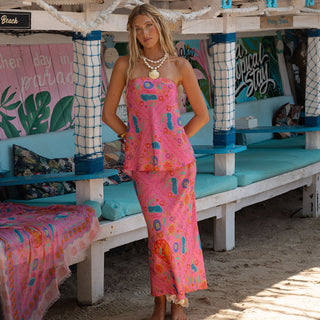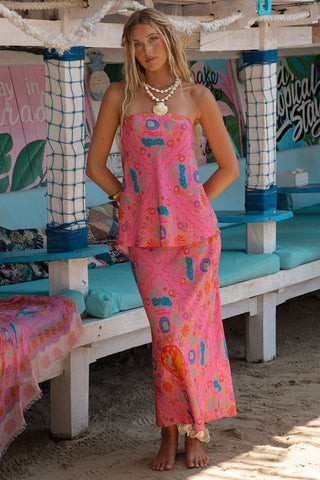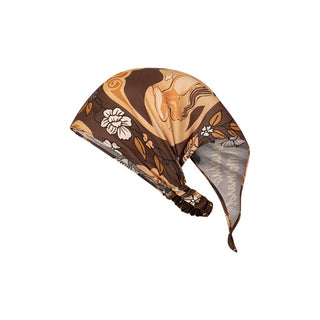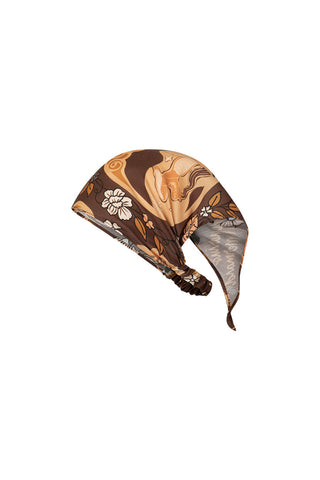diy: vegetable dye ~ bridesmaids



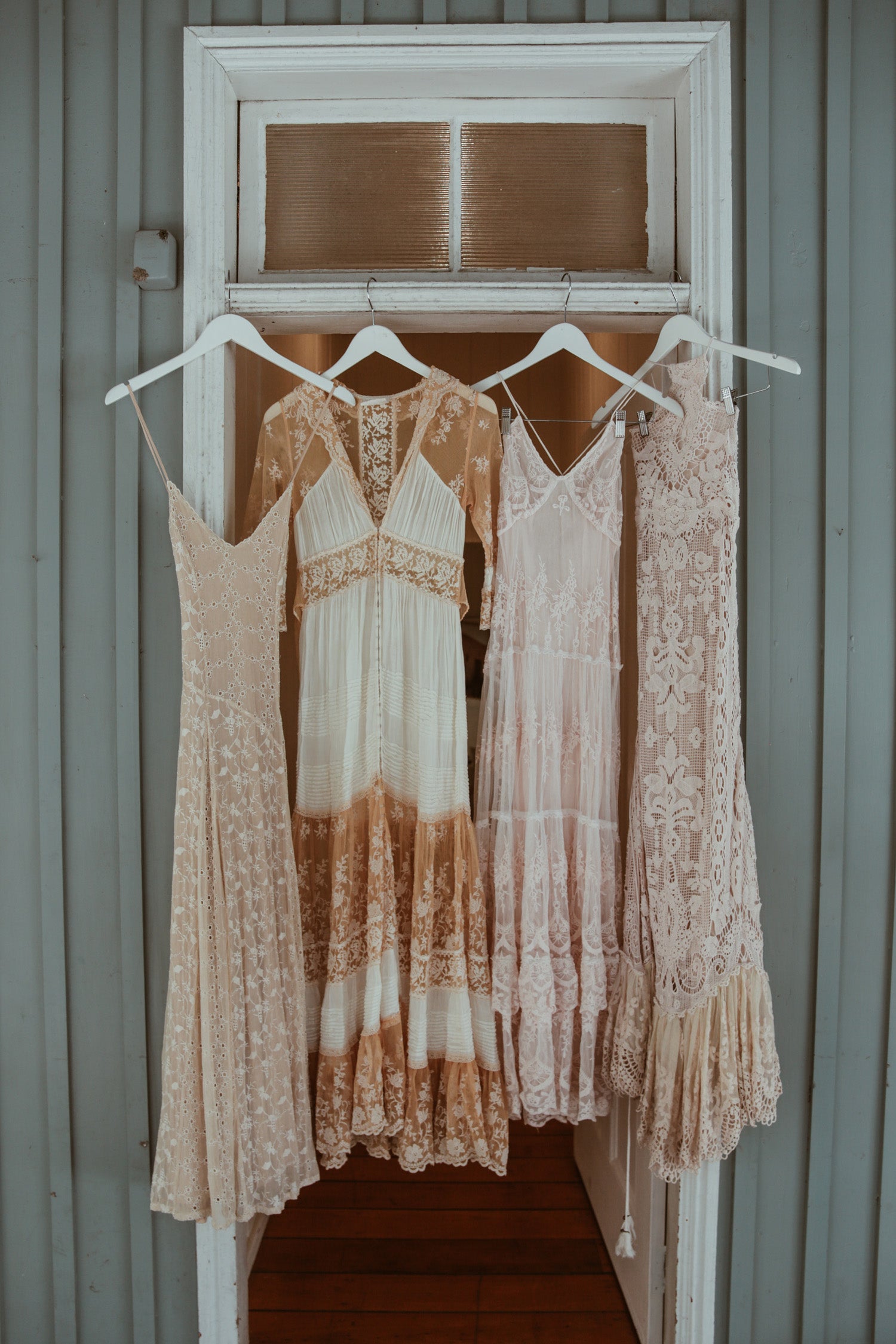
When we were approached by long-time friend of Spell, Ellie Bullen of @elsas_wholesomelife about reworking our gowns as bridesmaids dresses for her wedding, we figured since Spell Bride gowns are an extension of our luxe lace pieces, there is every possibility that they can be worn again to another occasion!
Anita Ghise, our local go-to seamstress reworked the gowns (goodbye long trains and hello ankle skimming hemlines!) after learning about vegetable dying with Sophie from Opia Byron Bay ~ which you may remember from our past blogs. We naturally (pun intended) wanted to use vegetable dye for the all important eco-factor. Not only does this mean a lot to Ellie, but also to us.
See below our step-by-step guide to vegetable dyeing…













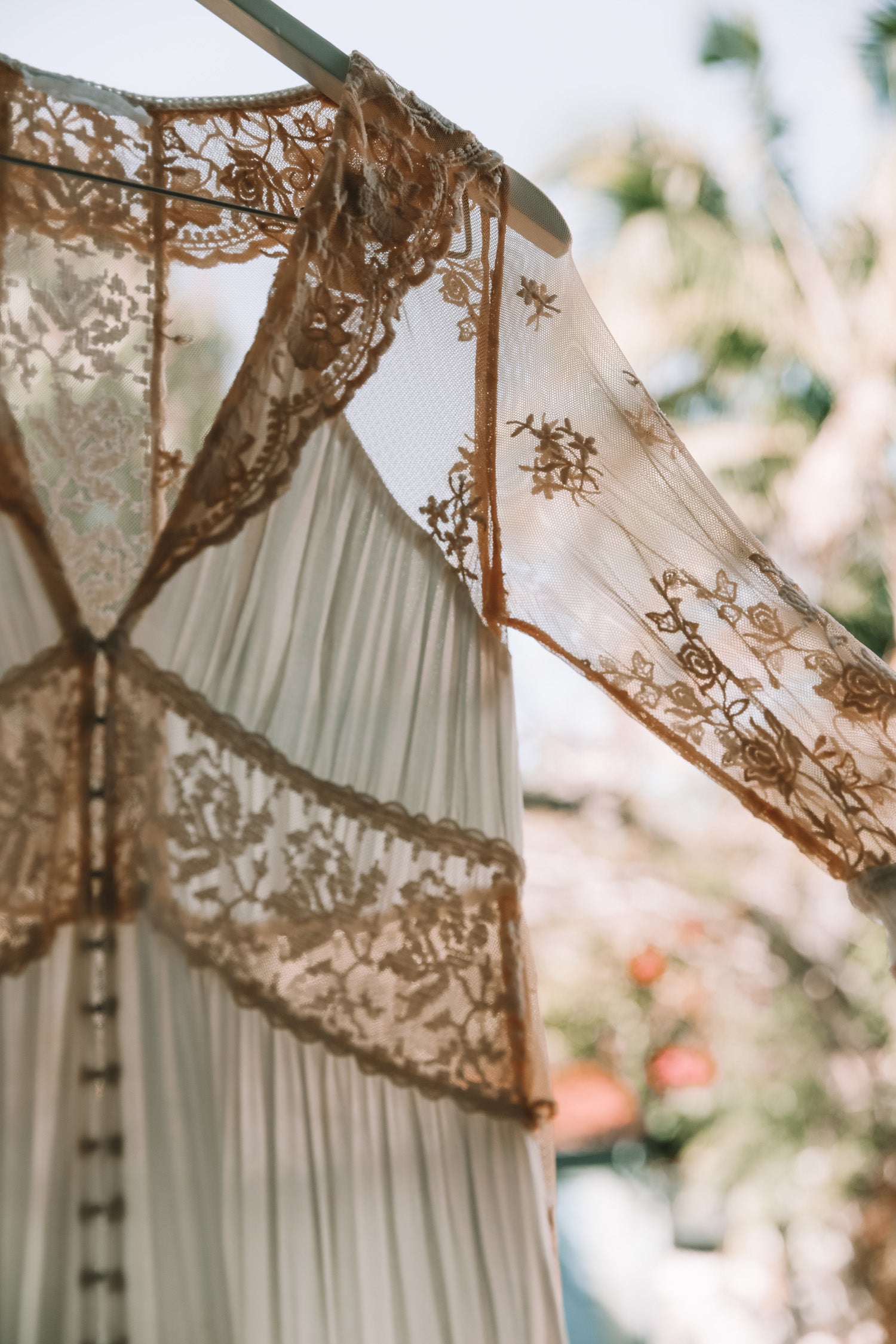

Assessing The Fabric
Anita and Ellie sat together and looked over each gown, assessing the possibility of how each item would soak in the vegetable dye. It is a fun but risky process – we knew from the outset each gown would differ because of the fabric make up. Typically natural fibres soak in the dyes, and non-natural fibres won’t soak them up as well. Although having said that, there were surprising results (in this case, the nylon lace actually took to the colour way better than the rayon, who would have thought?!), so you have to be open to all outcomes because every batch is going to be different! But hey, that’s half the fun!
Dying The Gowns
Anita, knowing each gown was made from a different fabric, and wanting to mix up the shades a little, used a few different vegetable dye recipes! Here are the recipes and what they would do (from left to right of gown hanging image)
Lucette Gown
This gown is 100% silk, so we used four dark avocado skins and eight cups of water per metre of fabric.
Evangeline Gown
This gown is made up of nylon lace and rayon so we used five cups jam-packed with yellow onion skins and eight cups of water per metre of fabric.
Canyon Moon Mesh Gown
This gown is nylon lace with silk lining so we used four dark avocado skins and eight cups of water per metre of fabric.
Casablanca Halter Gown
This gown is also a mix of nylon lace with silk lining, but a heavier fabric so we used two large beetroots washed and chopped with eight cups of water per metre of fabric. Then we repeated the process with four dark avocado skins and eight cups of water per metre of fabric.
Step 1
First up, be sure to pre-dampen your fabric by dipping it in room temperature water and wringing out any excess water before continuing.
Step 2
Boil water in a large pot and add your vegetables and skins to boiling water.
Step 3
Let everything simmer for 10 – 20 minutes or unit the water changes colour and then remove vegetable skins / vegetables from the pot.
Step 4
Place your gown in the pot, taking care to submerge it completely and evenly and allow to simmer for 20 minutes whilst the dye takes to the fabric.
Step 5
Remove gown from pot and rinse under cold water with white vinegar to fix the colour.
Step 6
Hang to dry and boom! Your custom-dyed bridesmaids dress is ready to be worn for many a happy occasion.
Hot Tip #1
If you are after more of an intense colour ~ leave your gown sitting in the pot overnight.
If you’d like a more subtle shade ~ dunk and remove quickly.
Hot Tip #2
If you want to make any alterations this should only be done by an experienced seamstress. Just make sure you measure your ‘maids to get an idea of where you want the gowns to finish before cutting.
If you do recreate this we’d love to see how your dresses turn out! #SpellDIY to share your creations
Love Team Spell xx
–
Seamstress Anita Ghise
Photographer Jamie Green
Photographer Jamie Green

